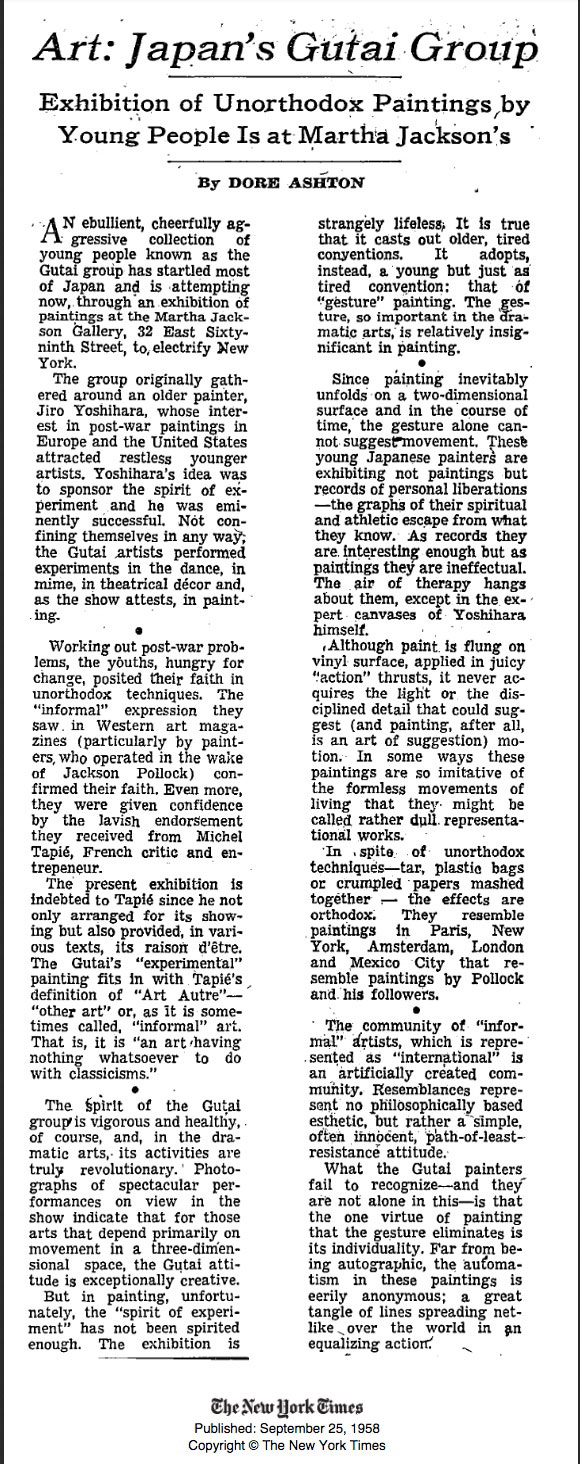Images
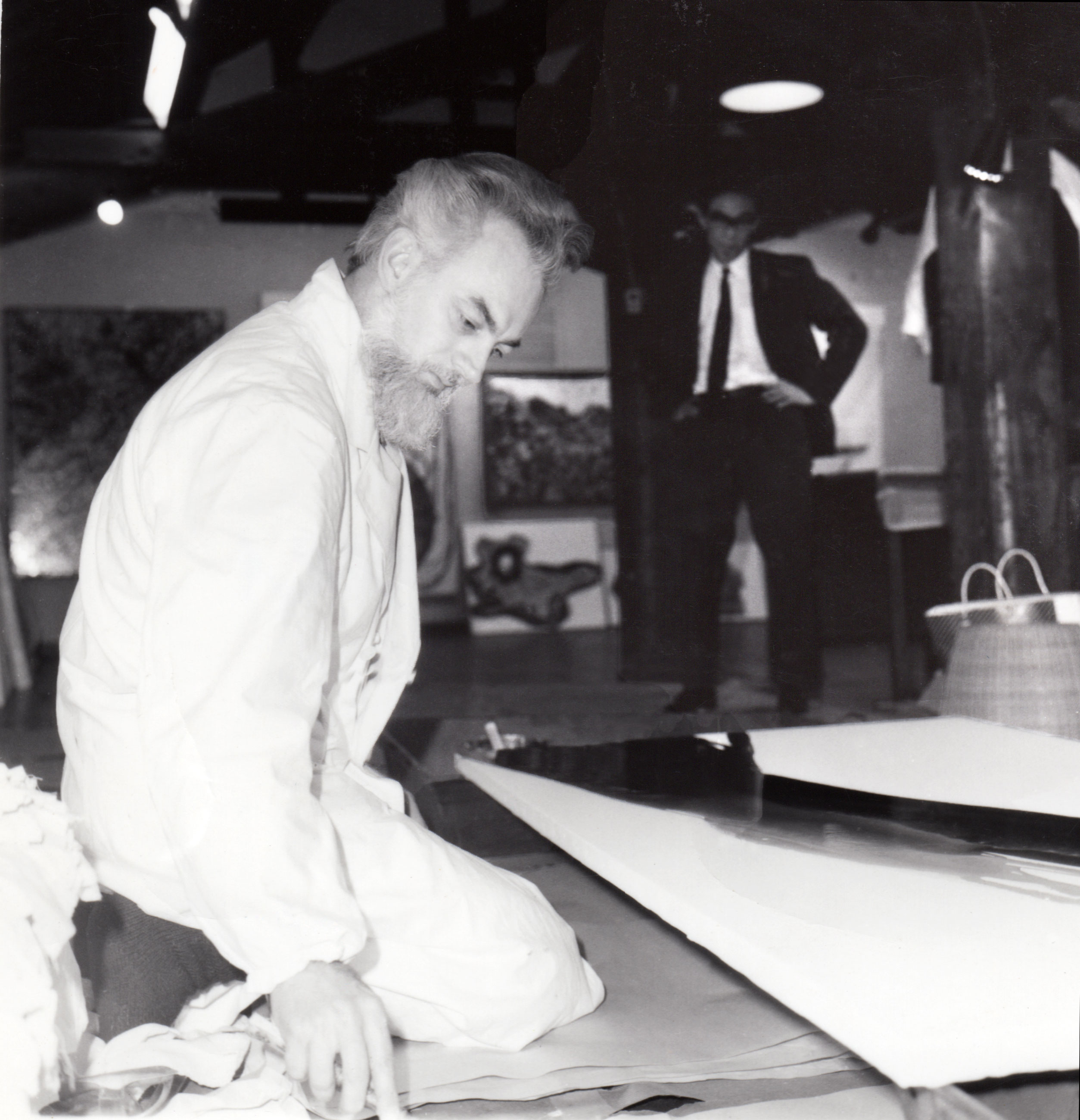 |
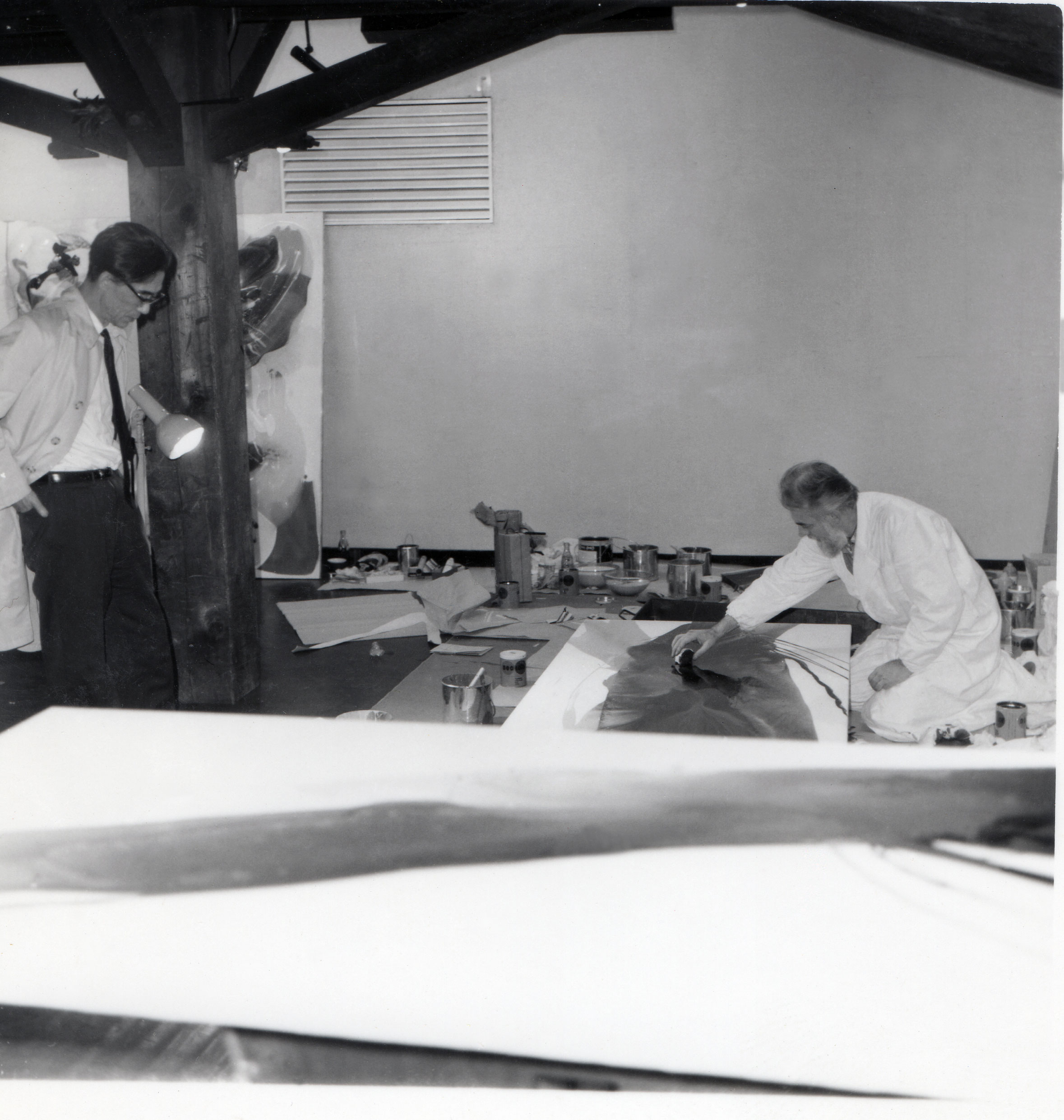 |
Left and right: Paul Jenkins working at the Gutai Pinacotheca, with Jiro Yoshihara, 1964.
![]()
N.Y. / Region | Arts | Long Island
Painting With Hands and Feet
AUG. 21, 2009The Gutai group of postwar Japanese conceptual artists not only made radical abstract paintings with their hands and feet; they also sought to network with similar-minded artists in other parts of the world. One of their efforts to forge these connections is the basis for a curious little show at the Pollock-Krasner House and Study Center exploring a link between Gutai and the artist Jackson Pollock.
Multiple copies of Issues 2 and 3 of the Gutai magazine, published by the group to illustrate and promote its activities, were found in Pollock’s library after his death in 1956 by a close friend, B. H. Friedman. But until recently nobody had any idea how they got there.
The answer to the mystery is contained in a recently discovered letter written by Shozo Shimamoto on behalf of the Gutai group to Pollock on Feb. 6, 1956, informing the American artist of Gutai’s existence and requesting his views on some enclosed copies of its magazines.
Pollock never responded to the letter, as far as anyone knows, but kept the magazines. He died later that year.
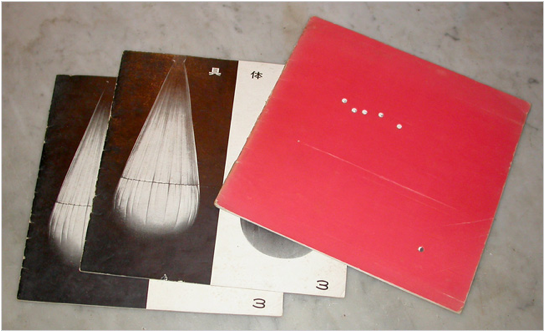
CONCEPTUAL TREASURES Issues of the Gutai journal sent to Jackson Pollock.Tetsuya Oshima, a Japanese curator, discovered the letter in 2006 while doing research on Pollock’s work in Lee Krasner’s papers at the Smithsonian Archives of American Art in Washington. His essay about the discovery in the catalog accompanying the present show is great reading. He also speculates that members of Gutai first saw Pollock’s work in a 1951 exhibition in Japan.
The current show contains the original letter, along with Mr. Friedman’s reply to the Gutai group informing them of Pollock’s death.
Mr. Friedman, a writer, was greatly interested in Gutai and continued to correspond with Jiro Yoshihara, the group’s charismatic leader; a selection of these letters from 1956 to 1958 is on display.They are interesting as personal memorabilia, but not much more. Fortunately the show also contains a small but delightful selection of Gutai paintings, most of them on loan from the New York-based abstract painter Paul Jenkins, who visited the group’s headquarters in Osaka in 1964.
Mr. Jenkins’s Gutai paintings, acquired through exchanges and gifts, include pieces by some of the core members of the group. The rhapsodic, visually dynamic untitled oil on canvas from 1964 by Kazuo Shiraga, for example, is a prime example of his characteristic technique: using his head, hands or feet to make swirls, arcs and slashes of color.
Hanging nearby, Toshio Yoshida’s untitled 1964 mixed media work recalls drip paintings by Pollock. A vibrant splatter painting, it consists of myriad flecks of paint circling a dense central shape on a black ground. It looks like an exploding star in space, or even a section of the paint-splattered floor of Pollock’s studio. It is one of the best works in the show.
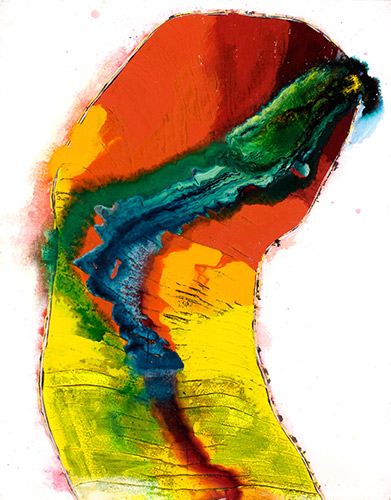
What Pollock thought of the paintings of this Japanese conceptual art group remains a mystery, but one imagines he would have approved of their enthusiasm for visual dynamism and the randomness of the final designs. He was at least intrigued enough by their activities to keep the copies of their journal that had been sent to him.
The exhibition curator, Ming Tiampo, has usefully included paintings and prints from the period by Pollock, Krasner and other American artists such as Mr. Jenkins and Alfonso Ossorio, giving viewers a chance to see how Gutai’s experiments in painting corresponded with developments in international abstraction.
There is an obvious affinity between some of these American pieces and works by the Japanese artists, which often make use of similar techniques. For “Untitled” (1963), Sadamasa Motonaga combined broad, liquid swathes of color in much the same way that Mr. Jenkins seems to have made a work like “Phenomena Nightwood” (1962).
This is a small but immensely interesting and ambitious show that will travel to New Jersey City University, in Jersey City, in the fall. Gutai’s paintings project a dynamism and playfulness that is little known or appreciated in this country.
“ ‘Under Each Other’s Spell’: Gutai and New York,” Pollock-Krasner House and Study Center, 830 Springs-Fireplace Road, East Hampton, through Oct. 17. (631) 324-4929 or pkhouse.org.
A version of this review appears in print on , on Page LI11 of the New York edition with the headline: Painting With Hands and Feet.
left: “Untitled” (1963), by Sadamasa Motonaga.
